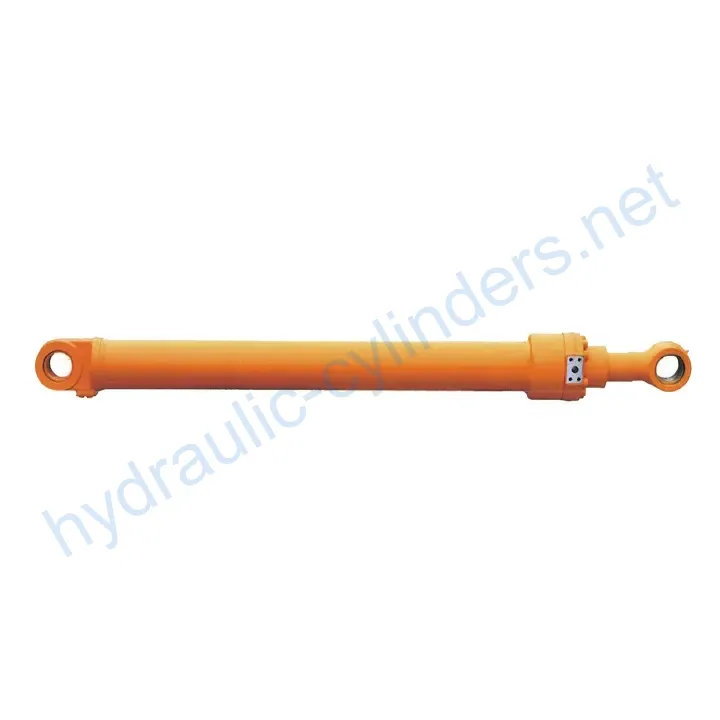Arm CylinderFor Doosan Middle Excavator DH215-9E
Arm Cylinder for Doosan Middle Excavator DH215-9E
Introduction
The arm cylinder is a specially designed hydraulic cylinder that provides linear motion and power to the arm of various types of machinery, such as excavators, cranes, and robotic arms. It plays a crucial role in hydraulic systems, enabling the efficient movement and control of additional tools or attachments. These cylinders not only ensure smooth motion but also withstand heavy loads, ensuring efficient operation and reliability of the machinery under various working conditions.
Definition and Explanation
The arm cylinder, also known as the boom cylinder or hydraulic arm cylinder, is a hydraulic component responsible for extending and retracting the arm of an excavator or similar equipment. It consists of a cylindrical body, a piston, and a rod, which work together to provide the necessary force for arm movement. The hydraulic fluid is pressurized and directed into the cylinder, causing the piston to move, which in turn extends or retracts the arm. This allows the excavator to perform various tasks, such as digging, lifting, and material handling.

Features
- High Efficiency Transmission: The arm cylinder provides powerful linear motion and force, ensuring high-performance capabilities for the machinery arm in various operations.
- Precise Control: Through the hydraulic system, the arm cylinder enables precise motion control, making the operation of attached tools more flexible and accurate.
- Durability: Arm cylinders are typically made of high-strength materials, offering excellent wear resistance and corrosion resistance, making them suitable for long-term use in harsh environments.
- Multi-functional Adaptability: These cylinders can be widely used in various mechanical equipment, such as excavators, cranes, and robotic arms, adapting to different job requirements.
- Easy Maintenance: The design considers ease of maintenance and replacement, making regular inspection and maintenance more convenient, thereby reducing equipment downtime.

Applications
The arm cylinder finds its applications in various industries and sectors:
1. Construction Engineering
In excavators and cranes, the arm cylinder controls the movement of the bucket or boom, facilitating earthmoving, material handling, and structural installation.
2. Manufacturing
In automated production lines, the arm cylinder is used for the motion of robotic arms, enabling processes such as assembly, welding, and material handling, thereby improving production efficiency and precision.
3. Agricultural Machinery
In agricultural machinery such as harvesters and seeders, the arm cylinder controls the movement of the operating arm, performing tasks like seeding, fertilizing, and harvesting.
4. Mining
In mining equipment, the arm cylinder controls the movement of mining equipment arms, facilitating the extraction and transport of minerals.
5. Logistics and Transportation
In forklifts and handling robots, the arm cylinder controls the lifting and movement of forks, enabling the handling and stacking of materials.

Design Considerations and Selection Criteria
When designing and selecting an arm cylinder, several factors should be taken into consideration:
1. Load-Bearing Capacity
The arm cylinder must be able to withstand the maximum load it will encounter during operation without failure or deformation. The material, dimensions, and construction of the cylinder should be carefully chosen to ensure sufficient load-bearing capacity.
2. Sealing
A proper sealing system is essential to prevent leakage of hydraulic fluid and maintain the efficiency of the cylinder. Various seal components, such as piston seals and rod seals, should be made of durable and wear-resistant materials to ensure long-lasting performance.
3. Durability
The arm cylinder should be constructed using materials that offer excellent durability and resistance to wear and corrosion. This ensures the cylinder’s longevity and reliable performance even in challenging operating environments.
4. Safety
Safety considerations should be integrated into the design of the arm cylinder, such as incorporating safety valves to prevent sudden movements or overloading. Proper installation and maintenance instructions should also be provided to ensure safe operation.
5. Maintainability
The design of the arm cylinder should facilitate easy maintenance and replacement of components. This includes accessible inspection points, clear instructions for maintenance procedures, and the use of standard components for easy sourcing.

Sealing and Lubrication
The arm cylinder utilizes various sealing components, such as piston seals and rod seals, to ensure proper sealing and prevent leakage of hydraulic fluid. These seals are made from wear-resistant materials like polyurethane and nitrile rubber. The cylinder body and threaded ends undergo careful surface treatment to enhance wear resistance. Regular lubrication with the appropriate amount of hydraulic oil is necessary to ensure smooth operation and prolong the lifespan of the cylinder.
Regular Inspection and Preventive Maintenance
To ensure optimal performance and longevity of the arm cylinder, regular inspection and preventive maintenance should be conducted:
1. Check for leaks and signs of wear in the seals and other components.
2. Inspect the cylinder body for any signs of damage or corrosion.
3. Verify the integrity of mounting brackets and connections.
4. Lubricate all moving parts with the recommended hydraulic oil.
5. Monitor the hydraulic system for any irregularities or changes in performance.

Product Installation Guide
Proper installation of the arm cylinder is crucial for its efficient operation and longevity. Follow these steps to ensure correct installation:
1. Ensure that the hydraulic system is depressurized before installation.
2. Align the arm cylinder with the mounting brackets and secure it using the appropriate bolts and fasteners.
3. Connect the hydraulic hoses to the cylinder according to the manufacturer’s instructions.
4. Double-check all connections and fittings for tightness.
5. Once installed, perform a thorough functional test to verify proper operation.


Author: lyl
参观我们的 VR 工厂
通过以下方式参观我们的 VR 工厂
液压缸应用:


